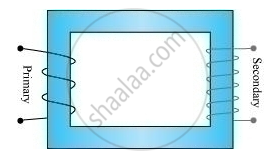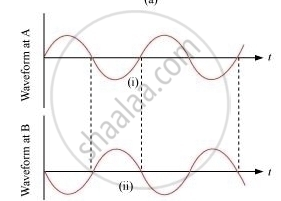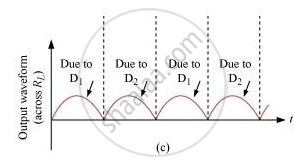Advertisements
Advertisements
Question
Describe briefly, with the help of labelled diagram, working of a step-up transformer.
A step-up transformer converts a low voltage into high voltage. Does it not violate the principle of conservation of energy? Explain.
Solution




In a transformer with Ns secondary turns and Npprimary turns, induced emf or voltage Es is:
`E_s = -N_s (dphi)/dt`
Back emf = Ep =`-N_p(dphi)/(dt)`
EP = VP
Es = Vs
Thus, Vs = `-N_s (dphi)/()dt`… (1)
`V_p =-N_p (dphi)/dt ... (2)`
Dividing equations (i) and (ii), we obtain
`(V_s)/(V_p) = N_s/N_p`
If the transformer is 100% efficient, then
`i_p v_p = i_s v_s` = Power (p)
Thus, combining the above equations,
`i_p/i_s = v_s/v_p = N_s/N_p`
Or,
`V_s = (N_s/N_p)V_p and I_s = (N_p/N_s) I_p`
If Ns > Np, then the transformer is said to be step-up transformer because the voltage is stepped up in the secondary coil.
No, the transformer does not violate the principal of conservation of energies. This can be easily observed by the following equation:
`V_s I_s =V_pI_p`
Power consumed in both the coils is the same as even if the voltage increases or current increases, their product at any instant remains the same.
APPEARS IN
RELATED QUESTIONS
State the principle on which transformer works.
Name two factors on which the magnitude of an induced e.m.f. in the secondary coil depends.
How is the e.m.f. across primary and secondary coils of a transformer related with the number of turns of the coil in them?
Explain the significance of Lenz’s law to show the conservation of energy in electromagnetic induction.
Name two kind of energy loss in a transformer. How is it minimized?
Mention the two characteristic properties of the material suitable for making core of a transformer.
Name three losses of energy in a transformer. How are they minimized?
A transformer lowers e.m.f. 220 V to 12 volts. If the number of turns in primary are 8800, how many turns are in secondary coil?
A transformer lowers e.m.f. from 220 V to 15 V. If 400 W power is given in primary, calculate (i) the current in primary coil and (ii) the current in secondary coil.
In a series resonant RLC circuit, the voltage across 100 Ω resistor is 40 V. The resonant frequency ω is 250 rad/s. If the value of C is 4 µF, then the voltage across L is
